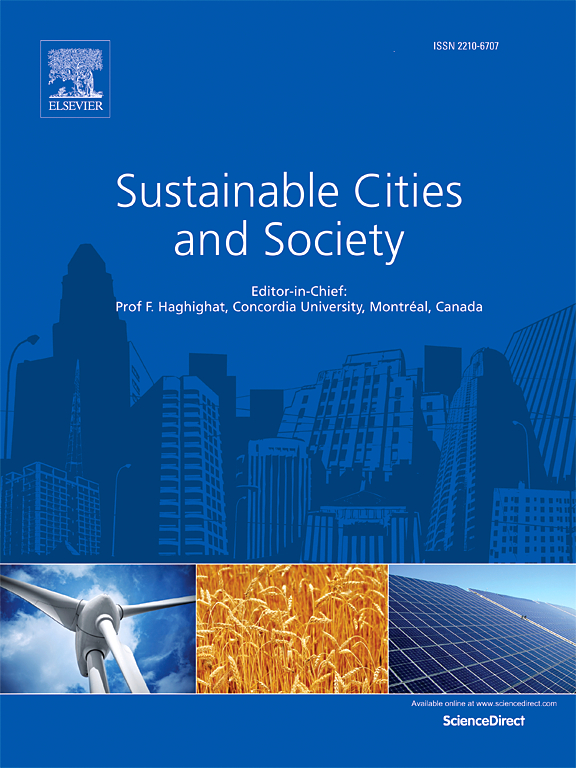基于可解释机器学习的技术创新对城市弹性的影响——以长江三角洲地区为例
IF 10.5
1区 工程技术
Q1 CONSTRUCTION & BUILDING TECHNOLOGY
引用次数: 0
摘要
技术创新(TEC)是区域和城市发展的核心驱动力;它在促进经济增长、社会进步和生态可持续性方面的作用有据可查,但它对城市弹性(UR)的影响仍未被探索。本文从经济、社会、生态和基础设施四个维度构建了中国长三角地区41个城市的可持续发展综合评价体系。本文揭示了2010 - 2022年中国城市化进程的时空演变特征,并采用XGBoost-SHAP模型分析了TEC对城市化进程的影响。长三角地区的UR平均得分从2010年的0.3010上升到2022年的0.4882。空间上呈现“东高西低”、“中部高、南北低”的格局,高值区集中在省会城市和苏南,低值区主要分布在安徽北部和西部。各子维度上,经济韧性和基础设施韧性增长较快,社会韧性和生态韧性增长较慢。TEC对UR的贡献为47.03%,是影响弹性最显著的因素。当TEC水平超过20时,UR显著促进UR;然而,当它达到50时,出现了负阈值效应。TEC对UR的影响在不同的社会经济背景下差异很大。我们的研究结果证明了TEC和UR之间复杂的非线性关系,强调了TEC和治理能力在促进UR和实现更精确的管理决策方面的关键作用。本文章由计算机程序翻译,如有差异,请以英文原文为准。
Measuring the impact of technological innovation on urban resilience through explainable machine learning: A case study of the Yangtze River Delta region, China
Technological innovation (TEC) is the core driving force of regional and urban development; its role in promoting economic growth, social progress, and ecological sustainability is well-documented, but its impact on urban resilience (UR) remains unexplored. We constructed a comprehensive evaluation system for UR in 41 cities within China’s Yangtze River Delta (YRD) region across four dimensions: economy, society, ecology, and infrastructure. The spatiotemporal evolution of UR from 2010 to 2022 was uncovered, and the XGBoost-SHAP model was employed to explore the influence of TEC on UR. The average UR score in the YRD region increased from 0.3010 in 2010 to 0.4882 in 2022. Spatially, UR exhibited a pattern of “higher in the east, lower in the west” and “higher in the central, lower in the north and south,” with high-value areas concentrated in provincial capitals and southern Jiangsu and low-value areas primarily located in northern and western Anhui. In terms of the sub-dimensions, economic and infrastructure resilience showed rapid improvement, whereas social and ecological resilience grew more slowly. The contribution of TEC to UR was 47.03%, making it the most significant factor influencing resilience. When the TEC level exceeded 20, UR significantly promoted UR; however, when it reached 50, a negative threshold effect emerged. The impact of the TEC on UR varied considerably across different socioeconomic contexts. Our findings demonstrate the intricate and nonlinear relationship between TEC and UR, underscoring the critical role of TEC and governance capabilities in fostering UR and enabling more precise management decisions.
求助全文
通过发布文献求助,成功后即可免费获取论文全文。
去求助
来源期刊

Sustainable Cities and Society
Social Sciences-Geography, Planning and Development
CiteScore
22.00
自引率
13.70%
发文量
810
审稿时长
27 days
期刊介绍:
Sustainable Cities and Society (SCS) is an international journal that focuses on fundamental and applied research to promote environmentally sustainable and socially resilient cities. The journal welcomes cross-cutting, multi-disciplinary research in various areas, including:
1. Smart cities and resilient environments;
2. Alternative/clean energy sources, energy distribution, distributed energy generation, and energy demand reduction/management;
3. Monitoring and improving air quality in built environment and cities (e.g., healthy built environment and air quality management);
4. Energy efficient, low/zero carbon, and green buildings/communities;
5. Climate change mitigation and adaptation in urban environments;
6. Green infrastructure and BMPs;
7. Environmental Footprint accounting and management;
8. Urban agriculture and forestry;
9. ICT, smart grid and intelligent infrastructure;
10. Urban design/planning, regulations, legislation, certification, economics, and policy;
11. Social aspects, impacts and resiliency of cities;
12. Behavior monitoring, analysis and change within urban communities;
13. Health monitoring and improvement;
14. Nexus issues related to sustainable cities and societies;
15. Smart city governance;
16. Decision Support Systems for trade-off and uncertainty analysis for improved management of cities and society;
17. Big data, machine learning, and artificial intelligence applications and case studies;
18. Critical infrastructure protection, including security, privacy, forensics, and reliability issues of cyber-physical systems.
19. Water footprint reduction and urban water distribution, harvesting, treatment, reuse and management;
20. Waste reduction and recycling;
21. Wastewater collection, treatment and recycling;
22. Smart, clean and healthy transportation systems and infrastructure;
 求助内容:
求助内容: 应助结果提醒方式:
应助结果提醒方式:


